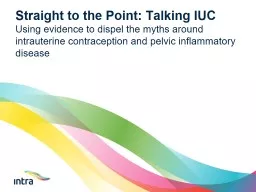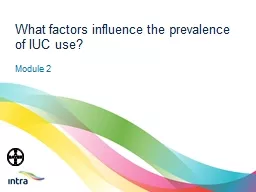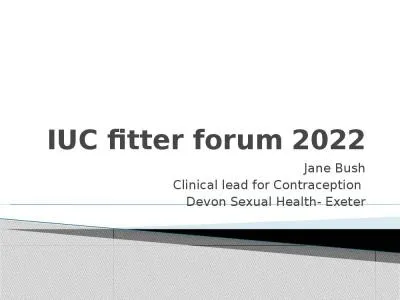PPT-Straight to the Point: Talking IUC
Author : trish-goza | Published Date : 2018-10-31
Using evidence to dispel the myths around intrauterine contraception and pelvic inflammatory disease INTRA PID slides Terms of use If any adjustments are made to
Presentation Embed Code
Download Presentation
Download Presentation The PPT/PDF document "Straight to the Point: Talking IUC" is the property of its rightful owner. Permission is granted to download and print the materials on this website for personal, non-commercial use only, and to display it on your personal computer provided you do not modify the materials and that you retain all copyright notices contained in the materials. By downloading content from our website, you accept the terms of this agreement.
Straight to the Point: Talking IUC: Transcript
Download Rules Of Document
"Straight to the Point: Talking IUC"The content belongs to its owner. You may download and print it for personal use, without modification, and keep all copyright notices. By downloading, you agree to these terms.
Related Documents














